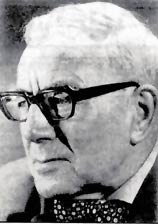It is an image that is seared on the popular conscience in times of financial crisis.
It is October 29, 1929. Stock markets in the United States had lost $30 billion in the course of a week. This was more than ten times the federal budget at the time and far more than the U.S had spent fighting World War I. This would be roughly $363 billion today.
In response to this financial disaster, brokers in New York were despondent and broken. In their despair, they began to fling themselves from the windows of their buildings. The streets of Manhattan are littered with corpses that represented the broken financial dreams of a nation. Even Winston Churchill witnessed such a suicide with horror.
This image is very evocative, very well-known, very widely-quoted and very wrong.
For the straight dope, well, read it here at Straight Dope.
John Kenneth Galbraith, in his classic 1955 book The Great Crash (whose conclusions I reject, by the way), confronts this issue. Galbraith studied suicide statistics and, while the suicide rate did rise from 1928-1932, the figures show no acceleration in September and October of 1929.
I suspect that there were two reasons for the popularity of this image. First, as the Straight Dope article makes clear, there were several well-publicized suicides that were connected (sometimes tenuously) to the events of October, 1929.
Second, and more powerfully, people who were going through the effects of the crash wanted to believe this. They wanted to believe that the people who had manipulated the market and lost all their money would kill themselves in their shame and despair. People were unhappy and poor so this image, as violent as it was, was an understandibly popular one. It is through this, I suspect, that this myth entered the popular conciousness.
We, as a society, need to find an outlet for our frustrations. When they are financial in nature, the targets will naturally be people in finance. That is why, in my opinion, the media has latched on to (and people have readily consumed) the sordid tale of Bernie Madoff. The full resentment of people and their financial woes are given a face and a dastardly story.
This sublimation of fear and resentment directed toward Madoff (who is doubtless a criminal who deserves to go to jail) springs from the same source as the persistence of the 1929 broker suicide myth. People seem to find this act soothing, expiating, cathartic and worth their time.
My one fear in this, though, is that people will "get it out of their systems" without looking into the deeper implications of the event. They will be glad that the brokers killed themselves, glad that Madoff went to jail and be done with it.
Let's not be so hasty. Let's try to understand these things, though the process be difficult and long.
We will all gain a clearer picture and deeper understanding.
And THAT'S no myth.
Do Not Worry
6 years ago

1 comment:
I couldn't agree with you more, Bernie Madoff is certainly a convenient and culpable villain for our woes--swindling Elie Wiezel, I mean, come on! But, select prosecutions and suicide won't fix the underlying problems.
To my mind, the fundamental question is how we can devise a regulatory framework that will allow markets to flourish but will also rein in the inherent human tendencies to let greed and self-aggrandizement get in the way of rational decision making.
What does the bounded rationality school of econ have to say on the subject?
Post a Comment